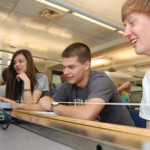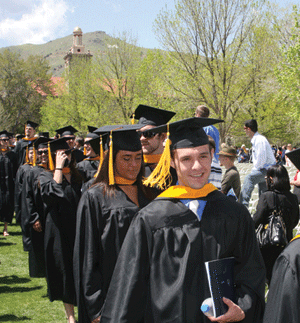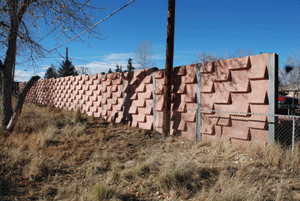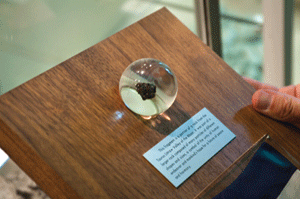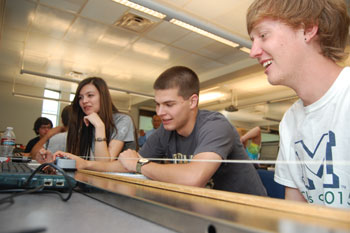 If you’ve never seen a standing wave, levitated a metal plate using a magnetic field, or built a mini railgun, you probably haven’t taken a recent physics class at Mines, where innovative teaching methods have dramatically improved student learning in some notoriously difficult, but required courses.
If you’ve never seen a standing wave, levitated a metal plate using a magnetic field, or built a mini railgun, you probably haven’t taken a recent physics class at Mines, where innovative teaching methods have dramatically improved student learning in some notoriously difficult, but required courses.
Coined ‘studio physics,’ the approach moves the bulk of instruction out of the traditional lecture hall and into specially designed classrooms, where students are encouraged to collaborate and interact as they work on group assignments and experiments.
Studies of this highly successful instructional model suggest social interaction is critical. As students work together to share, communicate and solve carefully structured problems, learning is enhanced. However, Physics Department Head Tom Furtak explains that no single element defines studio teaching: “It’s not just the classroom, or just socially engaged students. It’s kind of the whole mechanism,” he says.
Pioneered in 1994 at Rensselaer Polytechnic Institute, Furtak taught a pilot studio physics course in 1997. Today, after 15 years of thoughtful refinements, the program’s success has been dramatic. Before adopting studio physics, 40 percent of students dropped, withdrew or failed Physics I and II classes at Mines. Lately, that number has hovered between 10 and 20 percent.
Mines is now the only university in the U.S. where all undergraduate students take both Physics I and II in a studio format, and the program is frequently referenced in journals and papers as a national model. “We never set out to lead the way,” says Furtak. “We’ve remained focused on our campus mission. It’s just the way things turned out.”
Vince Kuo, a teaching professor who has played a leading role implementing and teaching studio physics at Mines, recently spoke about the program to the University of Wyoming Physics Department. Shortly afterward, the department voted to adopt the studio model for all foundational undergraduate physics courses. Later this year, Kuo travels to Abu Dhabi to help integrate studio physics at The Petroleum Institute.
On campus, the Physics Department continues to study how some of its upper-level classes can be adapted to the studio model. And Furtak continues to respond to a growing number of queries from other Mines departments interested in implementing a studio model in their courses. Included in his advice is a clear message about the commitment such a shift requires.
Moving away from a traditional university lecture model is a huge change. The studio environment is often noisy, lectures may fill only a quarter of the allotted time, and instructors must then take a back seat and let a social dynamic take over. “In almost every case that I’ve heard of, there has been a fair amount of resistance. It’s a radical shift to a different environment, a culture shift,” says Furtak. But that’s from the perspective of faculty; for students, it’s a methodology that undoubtedly works, and as it’s applied in universities around the world, Mines’ Physics Department can take pride in the role it played writing the formula.

